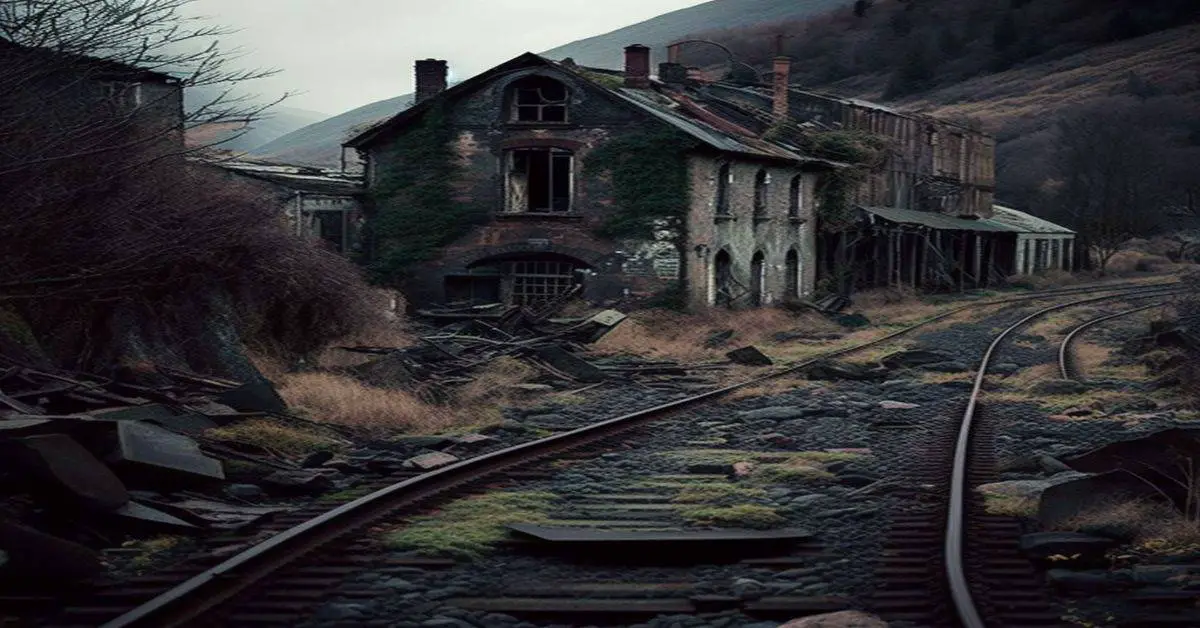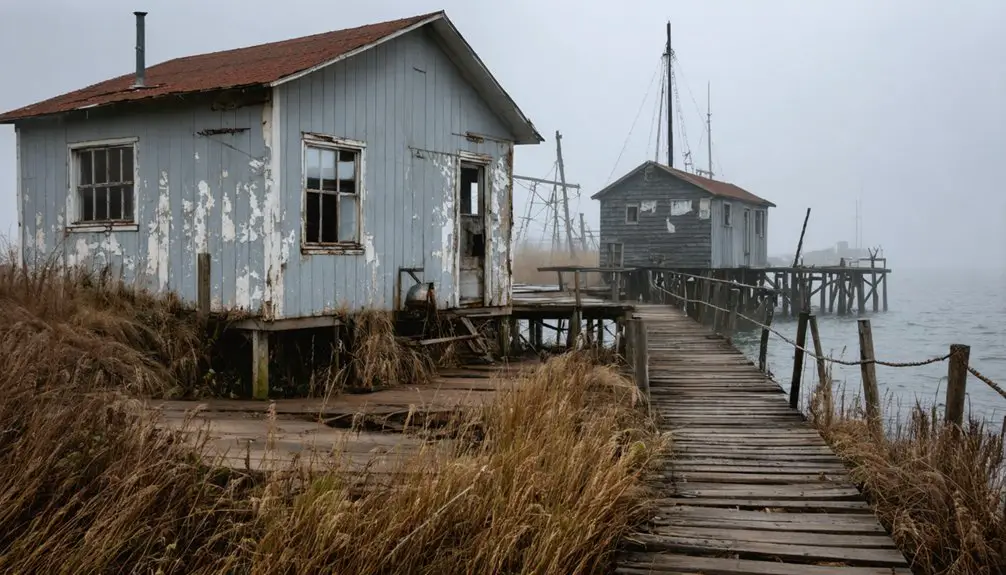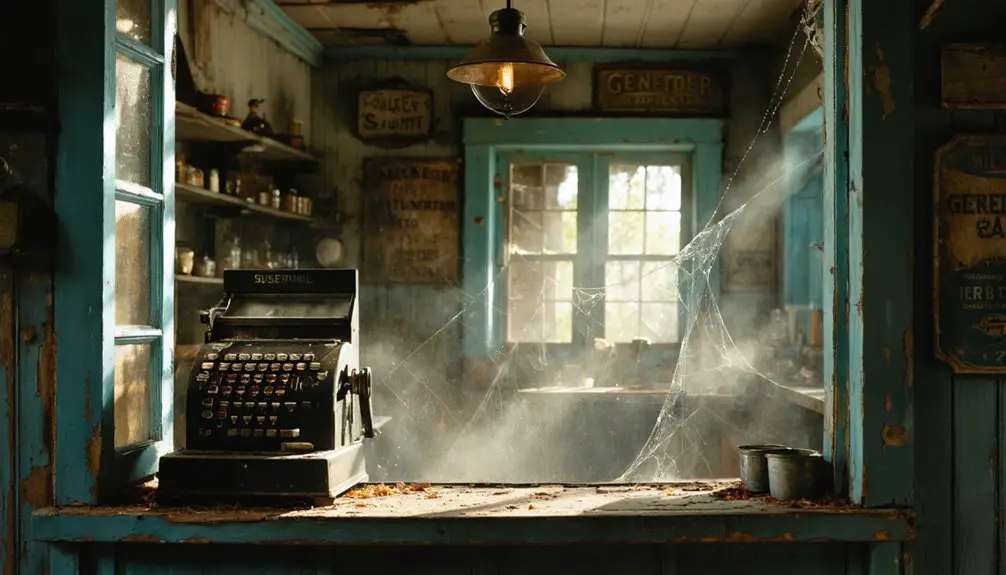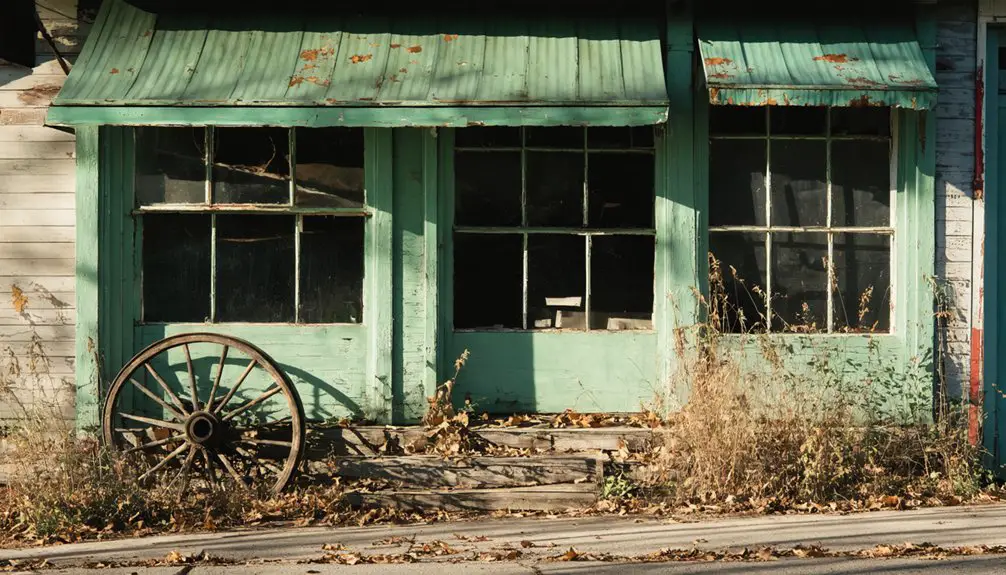In 1836, the Wisconsin Territory was established. Twelve years later, on May 29, 1848, the territory became the 30th state. Wisconsin was chosen as the English version of a French adaptation of an Indian word meaning “the place where we live.”
There are 147 ghost towns in Wisconsin. The current number of ghost towns is believed to be an incomplete count. Information is still being gathered on located towns and those that have yet to be discovered.
Known for its diverse climatic conditions and geographical features, Wisconsin is found in the Upper Midwest region of the United States. An interesting fact about Wisconsin is that the glaciers of the Ice Age largely impacted the state. The glaciers have affected all the areas of Wisconsin except the Driftless Area.
The towns of Wisconsin have witnessed many stages of evolution in the last century. Most of the flourishing towns during the 1800s have become ghost towns today. The depletion of natural resources from mining and lumber work has made people vacate these towns, searching for other places to ensure their livelihood.
Some towns have become deserted because they were severely impacted by natural disasters, such as fires, snowstorms, cyclones, and the like. Economic issues like the Great Depression made the world standstill and forced many businesses’ closures.
Sinipee, Wisconsin
This small town is in Grand County along the Mississippi River. It came to be recognized as a settlement in 1832 and was a very prosperous town. The Vaughan family (natives of North Carolina) were the founders of this small town.
The town had witnessed a lot of damage during the Black Hawk War in 1832; however, the real damage happened around the 1840s.
The snow around the town started to melt quickly, and there was water everywhere. Accumulation of water led to infestations from mosquitoes. As a result, a severe malaria outbreak swept across the town, killing several.
Almost all the inhabitants moved away from Sinipee after this deadly breakout. Today, all you can see are the remnants of the unfinished Vaughan home that offers a glimpse of the town’s rich history and wealth during the 1830s.
Dehli, Wisconsin
You can find the deserted town of Dehli on the banks of the Fox River. During the 1800s, Dehli was an important commercial town. It was buzzing with fur traders, general stores, and other businesses. This place was also known for the presence of a floating bridge.
It was expected that the town would grow to become a major city in the coming years, but the much-anticipated railroad project was transferred to another city. Since Dehli did not improve as much as the residents thought it would, they gradually moved away. Today, all you will find here is a desolate town with few architectural ruins.
Helena, Wisconsin
Helena was one of the mining business hubs in Iowa County in the late 1800s. Helena’s strategic location (right across the Wisconsin River) helped it become an essential point for transporting lead out of the mines to other destinations.
Had the railroad project included a stop in Helena, it would be a busy commercial town today. The rail project was assigned to the route of Spring Green.
After the railway bypassed the town, residents started relocating to places with good infrastructural development. Today, when you visit Helena, you can see a shot tower model used to make the lead, a few damaged buildings, and a cemetery.
Dover, Wisconsin
In 1844, there were around 700 settlers in the small town of Dover. They had come from the British Temperance and Emigration Society to settle here. Due to the presence of mines, Dover was a busy town back then. Reports indicate that the town had some saloons, blacksmith shops, post offices, hotels, copper mines, general stores, and other establishments during its peak.
Unfortunately, the railroad project was assigned to the nearby town of Mazomanie, due to which many people started moving to Mazomanie for better prospects. Gradually, Dover became a ghost town, with almost none of the structures remaining intact today.
Pendarvis, Wisconsin
In the late 1800s, this was a beautiful town with over 4,000 residents. Many mines of tin, lead, and zinc was found here, attracting miners and businesses. However, when the natural mine resources were exhausted, residents abandoned the town, searching for other work.
Pendarvis is known to have visible traces of homes used by miners during its heyday. This place has earned a name for itself in the National Historic Register.
Belmont, Wisconsin
In 1836, Belmont was considered one of the most popular towns in the territory of Wisconsin. Belmont was the chosen place for holding government meetings and hosting guests. What started as great fanfare ended very tamely. The Belmont building that was supposed to hold government meetings was not even used for two months.
The building generated a lot of heat and made it uncomfortable to stay inside for a long. The Belmont guesthouse, too, was overcrowded, and not many legislators were happy about its structure and facilities.
As a result, they unanimously voted against Belmont and chose Madison as the capital city. Since then, Belmont has become a ghost town, with nothing to show except the remnants of a court building and other government structures.
Apostle Islands, Wisconsin
Located in the Ashland and Bayfield County, Apostle Islands have a history that dates to 1693, during the time the English and French started fur trading businesses in the area. Until the late 1800s, this place buzzed with many commercial establishments such as sandstone quarries, fishing, fur trading, and more.
Gradually, the islands became abandoned as the businesses started to fade away. The 22 islands found in the northernmost part of Wisconsin are now deserted. Only the remnants of commercial structures can be seen here, but they are blessed with natural beauty.
Donaldson, Wisconsin
Many years ago, Donaldson was a significant center of lumbering. However, a major fire broke out, leading to the mill’s destruction and most businesses. The nearby town of Land O’Lakestown started developing rapidly, so the residents of Donaldson began to move there.
Today, you can view the remnants of a railroad project, the dilapidated Donaldson school’s steps, and a few foundations of old buildings.
Pokerville, Wisconsin
In the late 1800s, Pokerville was an active community. It was the first city that was established in Dane County. All the nearby towns and villages were rich in mines, which attracted people to Pokerville. They used to live their life king-size here, as reports indicate daily gambling, drinking, and liquor trading.
While the bloodshed and battles happened on one side of the town, liquor flowed freely on the other, making Pokerville one of the happening cities in Wisconsin.
However, as the mines got low on minerals, Pokerville, or Blue Mounds West (earlier known), started losing its fame. By the 1940s, this place was converted into a ghost town. The remnants of the dilapidated structures were moved to a campground, which can be seen today.
Traces of how people entertained themselves in those days when the mining business flourished are evident where the town once stood.
Haunted Places In Wisconsin
The Bloody Bride Bridge – Located at Seven’s Point, the Bloody Bride Bridge is a spooky spot on Highway 66 near the Plover River. It is believed that a bride was killed in an accident on this spot on her wedding night.
Passersby on this bridge have often spotted a lady wearing a red bridal dress stopping the cars. Some drivers have spotted the strange lady sitting in the backseat of their vehicles. Though nothing has been proven, it is still a scary incident and can send chills down your spine.
Dartford Cemetery – Please do not visit the Dartford Cemetery located along Green Lake if you are weak-hearted. Many people have spotted the ghosts of some people roaming throughout this cemetery. The most commonly spotted ghost is Chief Highknocker, who is believed to have died by drowning in 1911.
It has been said a strong push can be felt when sitting on or near some of the graves, even if nobody is there.



